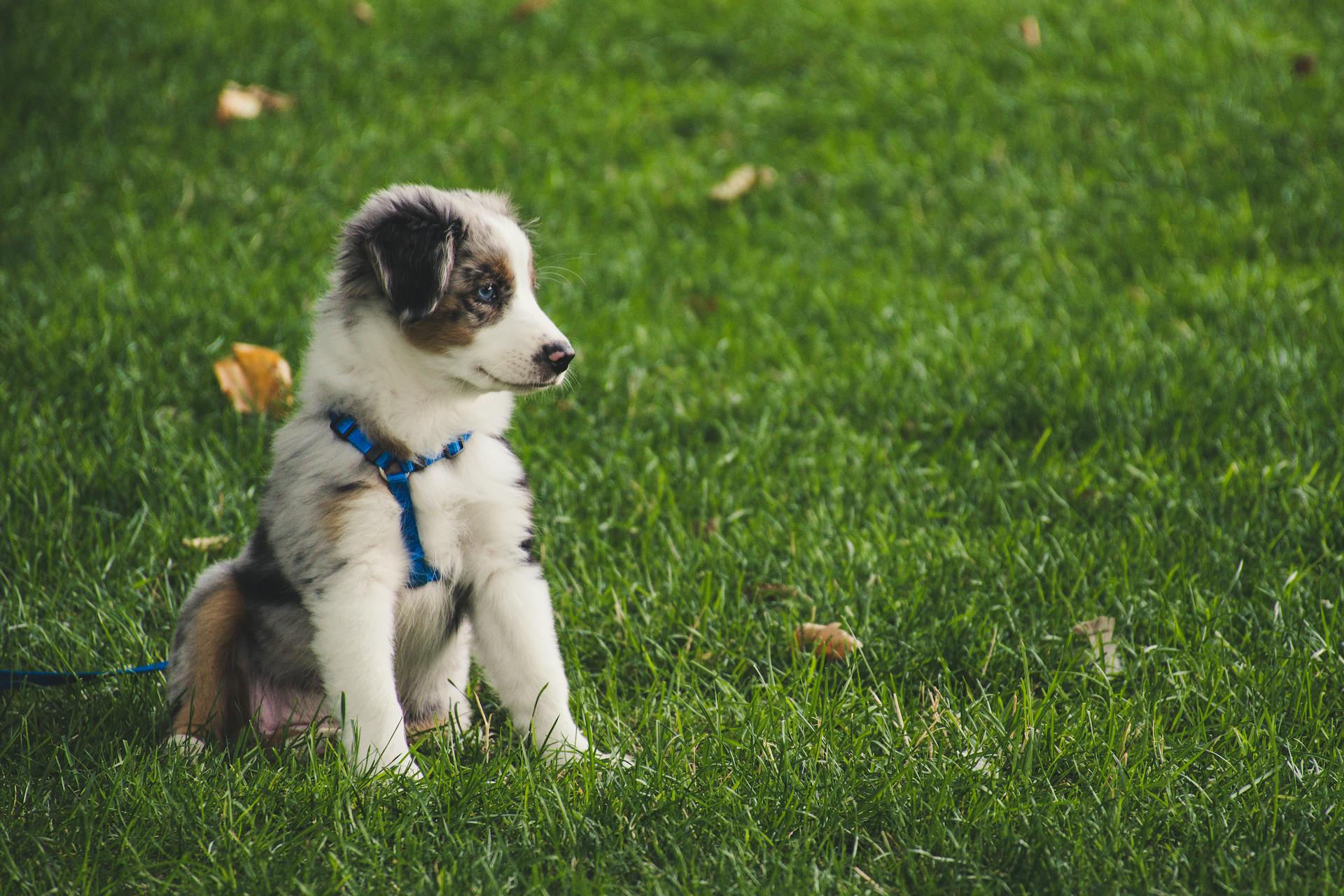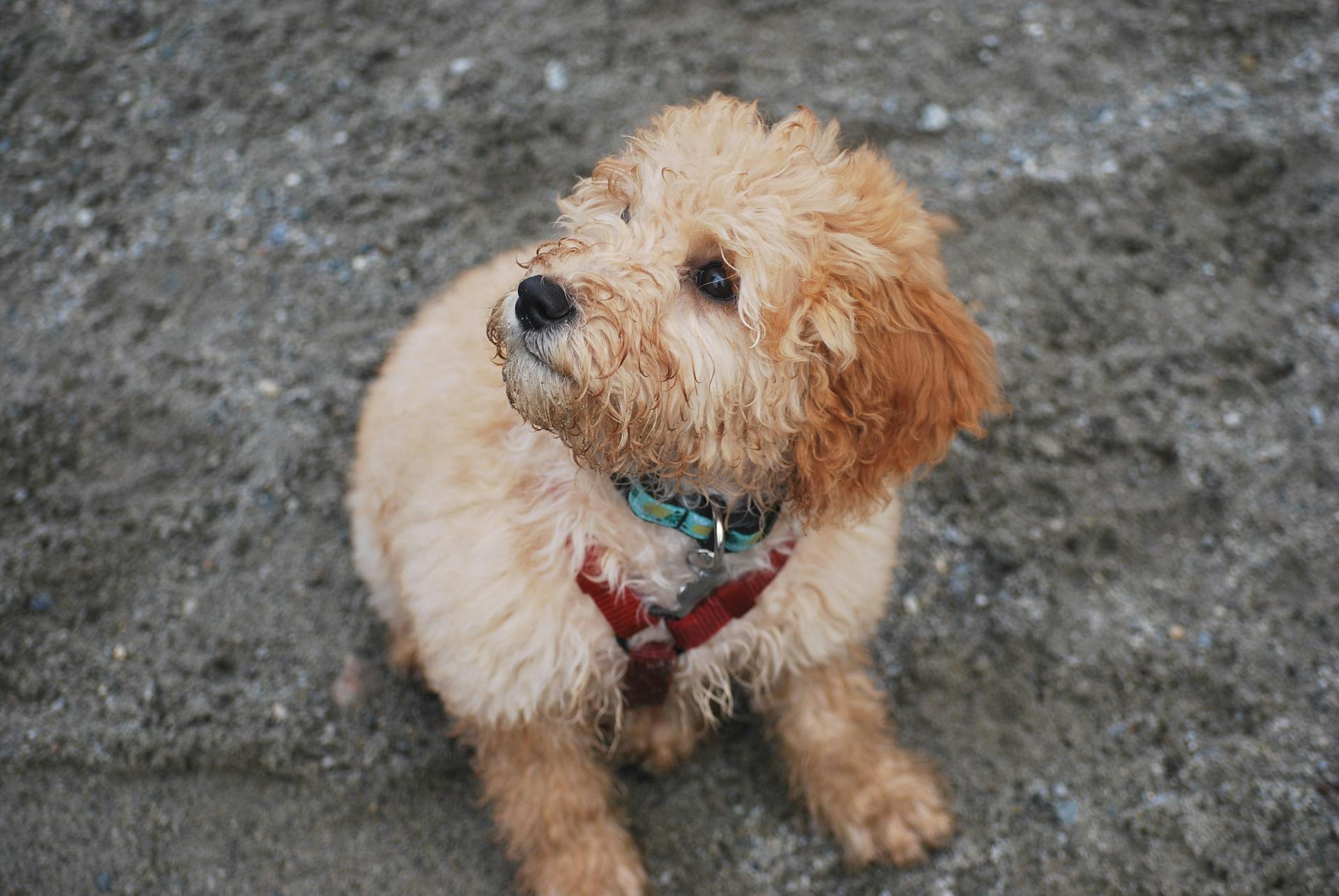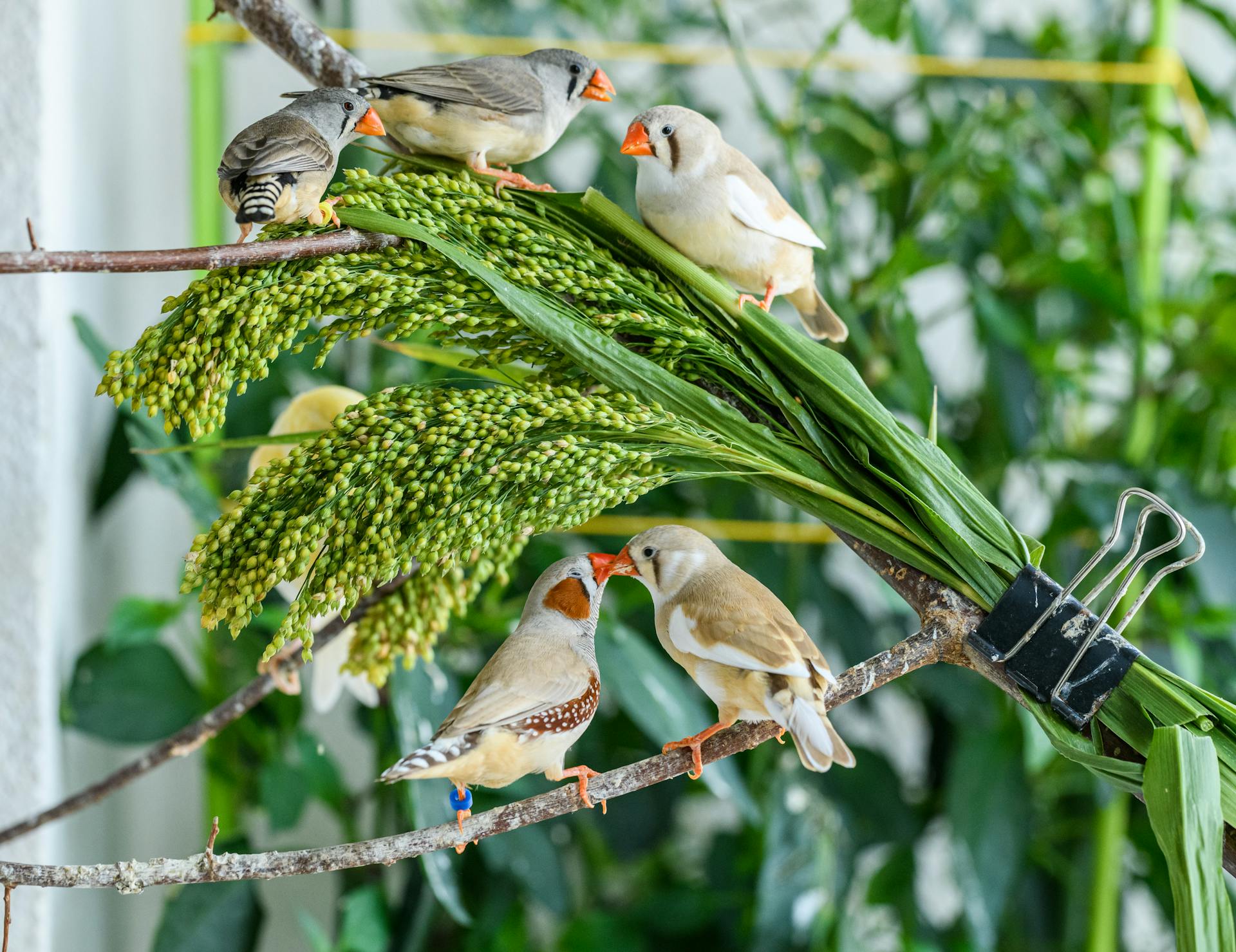
Australian Shepherds are known for their strong attachment to their owners, earning them the nickname "velcro dog." This intense bond can be both a blessing and a curse, especially for owners who value their independence.
They thrive on attention and interaction, and their anxiety can spike when left alone for extended periods. In fact, studies have shown that Australian Shepherds can suffer from separation anxiety, leading to destructive behavior.
Their high energy levels and need for mental stimulation also contribute to their attachment, as they seek to engage with their owners and alleviate boredom. Regular exercise and mental stimulation can help alleviate some of these attachment issues.
With patience and consistency, owners can teach their Australian Shepherds to be more independent and confident, reducing the risk of anxiety and destructive behavior.
A fresh viewpoint: Are German Shepherds Good for First Time Owners
8 Causes of Clinginess
Lack of socialization can be a major contributor to an Australian Shepherd's clingy behavior. This is because socialization helps dogs become confident and calm in new situations.
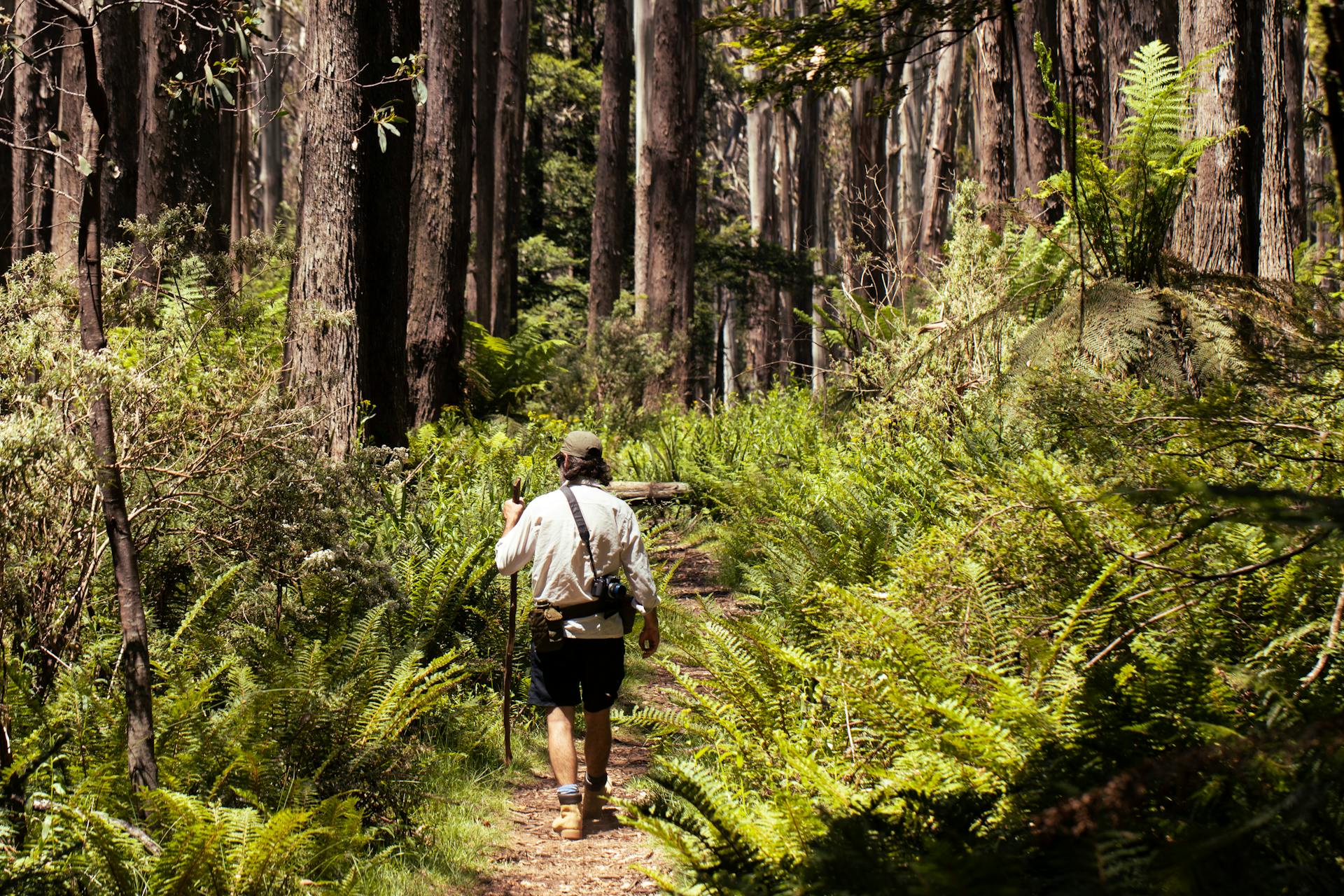
Australian Shepherds, like all dogs, greatly benefit from socialization. It can help address clingy behavior by teaching them that unfamiliar people, animals, and environments are not dangers, but rather opportunities for enjoyable experiences.
A lack of socialization can cause dogs to develop overly strong attachments to their owners, leading to clingy behavior. This is why it's essential to introduce your dog to various people, animals, environments, and experiences at a young age.
Socialization is based on positive reinforcement, which means rewarding good behavior and encouraging your dog during socialization activities. This helps your dog form positive associations with new things.
You can help your Australian Shepherd feel more secure and at ease by gradually increasing their exposure to new sights, sounds, and smells. This can be done by visiting new locations and introducing them to unfamiliar people and animals in a safe and constructive way.
Socialization is a continuous process that should begin when your dog is a puppy, but it can be helpful at any stage of your dog's life.
You might like: New Zealand Heading Dog
The Herding Instinct

The herding instinct is a fundamental aspect of the Australian Shepherd's personality, stemming from their heritage as working dogs. They were bred to help herd livestock, which required them to be attentive and close to their human handlers at all times.
Australian Shepherds view their owners as their "flock" and naturally prefer to keep them close by and within their line of sight. This can result in clingy behavior, such as following their owners around the house.
Their strong herding drive is a result of their instincts being passed down through generations. They might follow their owners around the house, seeking out close proximity at all times.
To satisfy their herding drive, Australian Shepherds need lots of physical activity, mental challenge, and quality time with their owners. This can help reduce clingy behavior and strengthen their bond with their human companions.
Additional reading: Are Border Collies Good for First Time Owners
Helping Your Clingy Dog
Australian Shepherds are known for their loyalty and close relationships with their owners, but their clinginess can be both endearing and problematic.
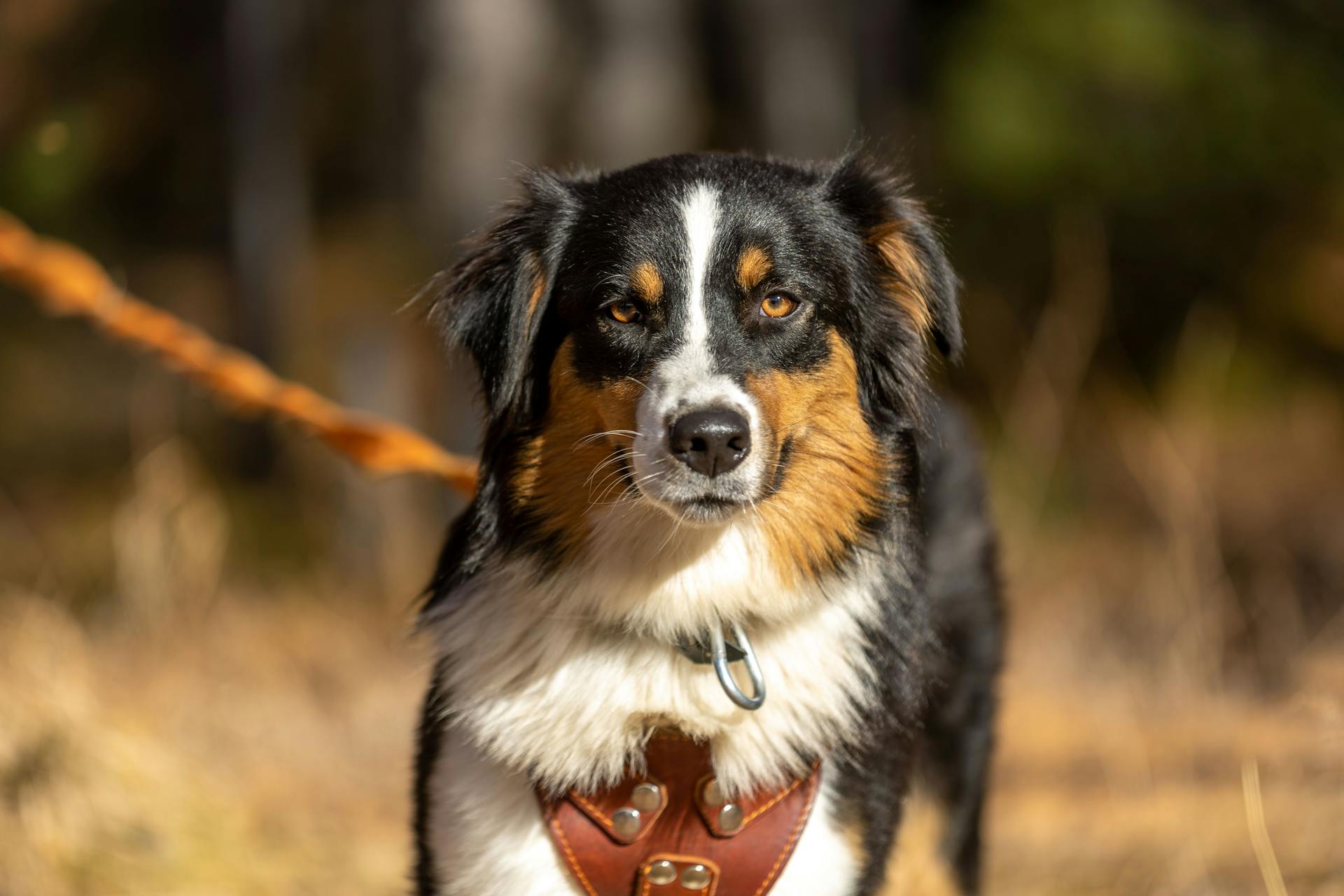
Lack of socialization is a common cause of clingy behavior in Australian Shepherds. Without enough socialization, dogs may develop overly strong attachments to their owners and behave clingily.
To address this, consider including socialization exercises in your dog's routine, such as visiting new locations with various sounds, sights, and smells, and introducing them to unfamiliar people and animals in a safe and constructive way.
Separation anxiety is another potential cause of clingy behavior, characterized by destructive behavior, excessive barking, and bathroom mishaps when left alone. To help your Australian Shepherd overcome separation anxiety, consult a qualified dog trainer or veterinarian for advice on behavior modification exercises and training methods.
Rewarding good behavior and spending quality time together are effective methods for reducing clingy behavior in Australian Shepherds. Give your dog plenty of praise, treats, or playtime to reinforce desired behaviors, such as being calm and independent, and establish limits to avoid overpraising or encouraging overly dependent behavior.
You might like: Do German Shepherds Have Anxiety
Helping Your Clingy
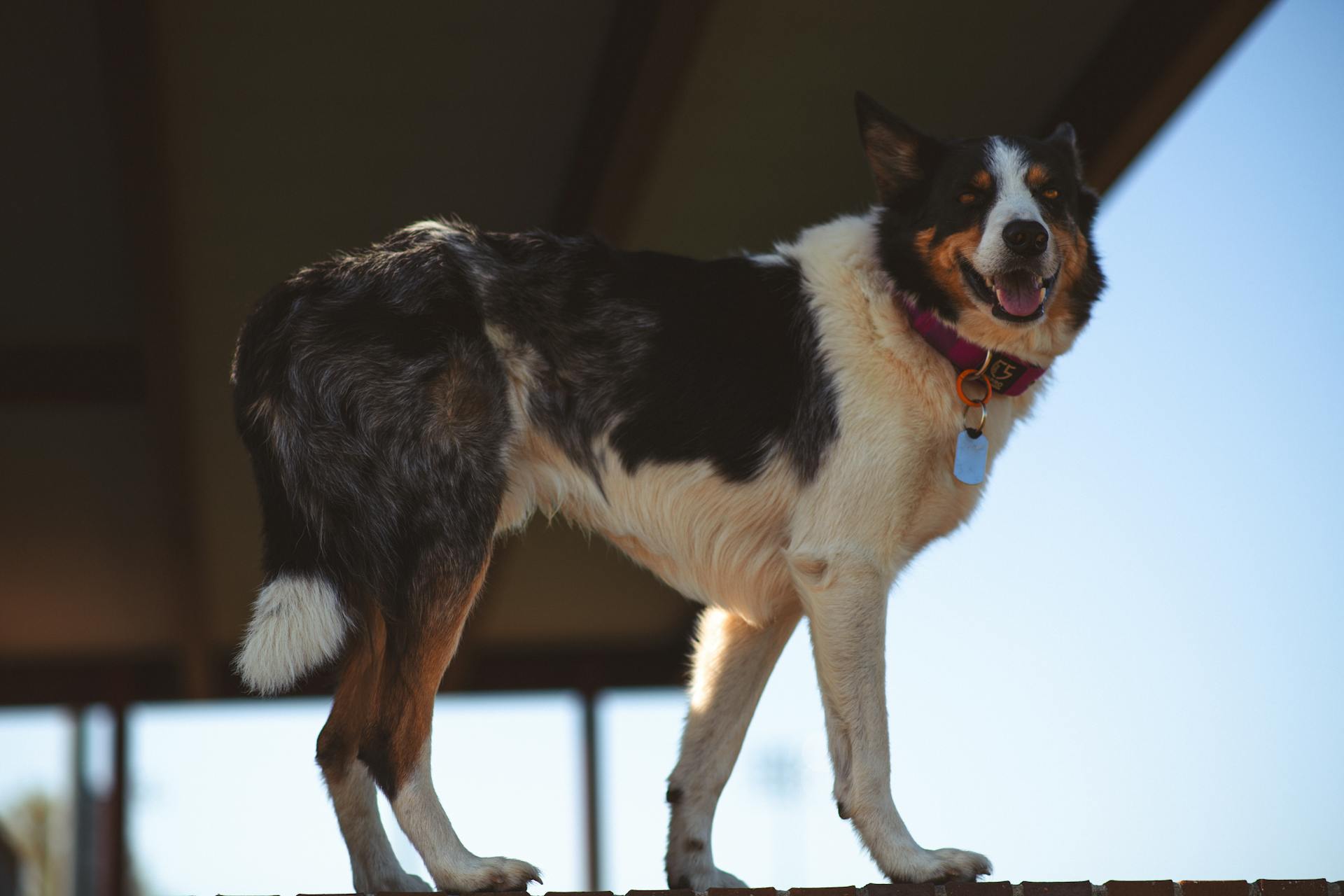
Australian Shepherds are notorious for their loyalty and close relationships with their owners, which can sometimes manifest as clinginess. This behavior can be both endearing and annoying.
Socialization is key to addressing clingy behavior in dogs. Without enough socialization, dogs might develop overly strong attachments to their owners and behave clingily.
You can help your Australian Shepherd form positive associations by rewarding good behavior and offering encouragement during socialization activities. This teaches them that unfamiliar people, creatures, and environments are not dangers but rather chances for enjoyable experiences.
Excessive clinginess can be a sign of separation anxiety or other behavioral problems. Destructive behavior, such as chewing on furniture or scratching doors, and excessive barking are common signs of separation anxiety in Australian Shepherds.
Socialization exercises can be a game-changer in helping your dog feel more secure and at ease. Visit locations with a variety of sounds, sights, and smells and introduce them to unfamiliar people and animals in a safe, constructive way.
Separation anxiety is a condition that can be managed with time, consistency, and the right training. Consult a qualified dog trainer or a veterinarian for advice on behavior modification exercises and training methods to help your pet adjust to being left alone.
A continuous socialization process that begins when your dog is a puppy can help your Australian Shepherd feel more secure and confident without becoming overly clingy.
Rewarding Behavior and Spending Time Together
Rewarding good behavior is a great way to encourage your dog to be more independent. Positive reinforcement can help reinforce desired behaviors and teach children that showing affection will lead to praise and benefits.
To reduce clingy behavior in your Australian Shepherd, it's essential to establish limits and refrain from overpraising. Overpraising can create a sense of entitlement in your dog, making them more clingy.
Establish set times for cuddles or playtime and refrain from rewarding overly dependent behavior. Reward independent and self-assured moments instead.
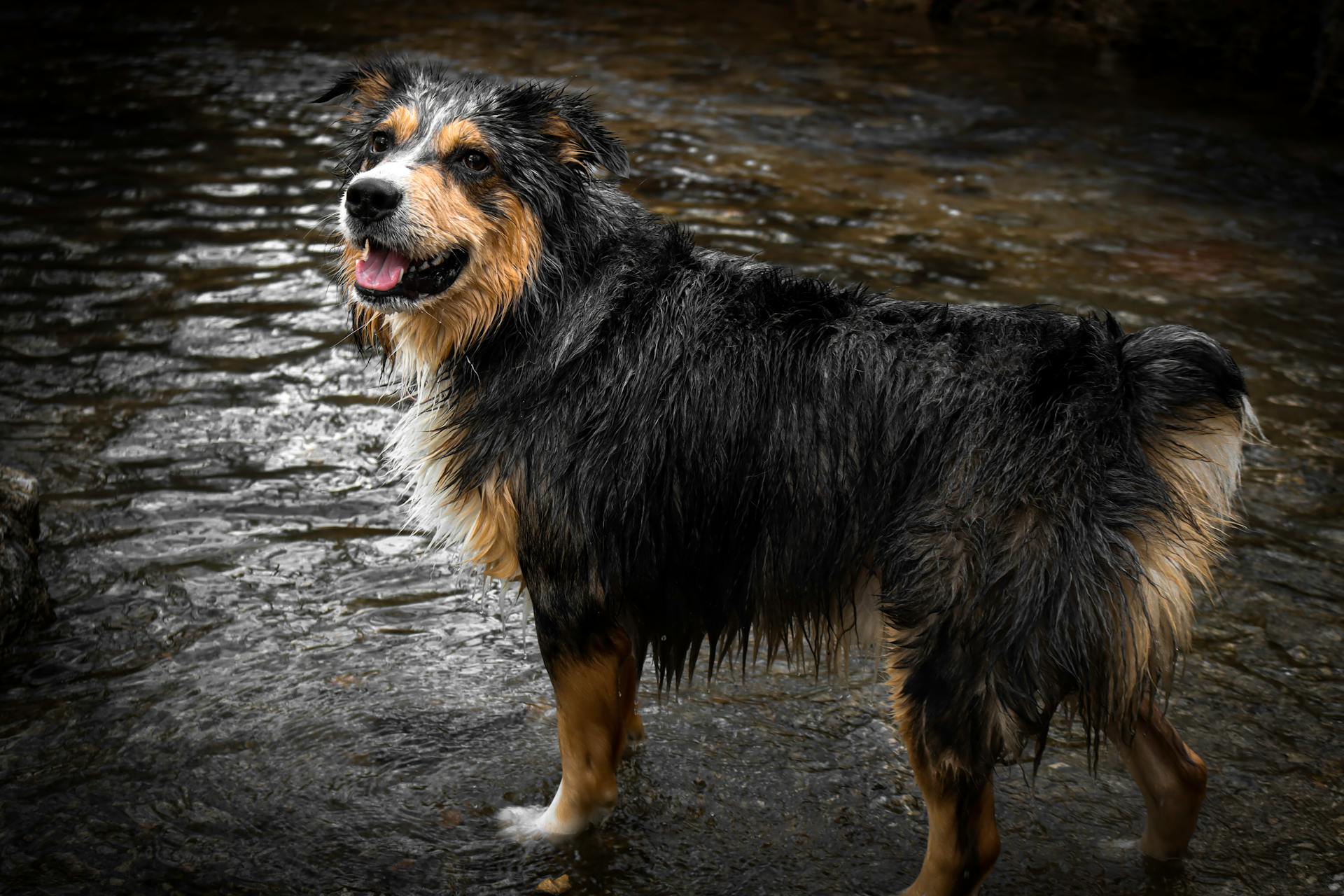
Spending quality time together is crucial in building a strong bond with your Australian Shepherd. Regular one-on-one interactions like walks, training sessions, or mentally challenging exercises can help give your dog the mental and physical stimulation they require.
Here are some tips for spending quality time with your Australian Shepherd:
By spending quality time with your Australian Shepherd and rewarding good behavior, you can help reduce clingy behavior and promote a healthy relationship with your furry friend.
General Information
Australian Shepherds are highly intelligent dogs that thrive on mental and physical stimulation. They have a strong work ethic and excel in dog sports like agility and obedience.
These dogs are naturally inclined to follow a leader and can become Velcro dogs, sticking close to their owners. They have a strong instinct to herd and protect their family.
Australian Shepherds are generally medium-sized dogs, weighing between 30-50 pounds and standing 18-23 inches tall at the shoulder.
Appearance
The Australian shepherd is a medium-sized, solidly built herding dog with a body that's slightly longer than it is tall.
Their coats can vary greatly in color and pattern, but four main categories are recognized: black, red, red merle, and blue merle.
Aussies have a two-layer coat, with a weather-resistant top coat of medium-length hair that's straight or slightly wavy, and an undercoat that helps them adjust to both heat and cold.
They can go weeks between full baths, but do require weekly brushing to keep out debris and prevent matted fur.
It's thought that approximately one in five Aussies' tails are naturally bobbed – meaning they're shorter at birth – while others were historically docked in puppyhood.
The American Veterinary Medical Association no longer recommends tail docking and considers it a purely cosmetic procedure that may actually do more harm than good.
Their eyes can vary greatly based on genetics, and typically, black and red Australian shepherds have brown, amber, or blue eyes.
Aussies with merle coloring have a wider range of eye colors, including brown and blue, blue marbled with brown, and even two different colors and or patterns altogether in each eye.
Check this out: Smooth Collie Breed
Do Dogs Shed?
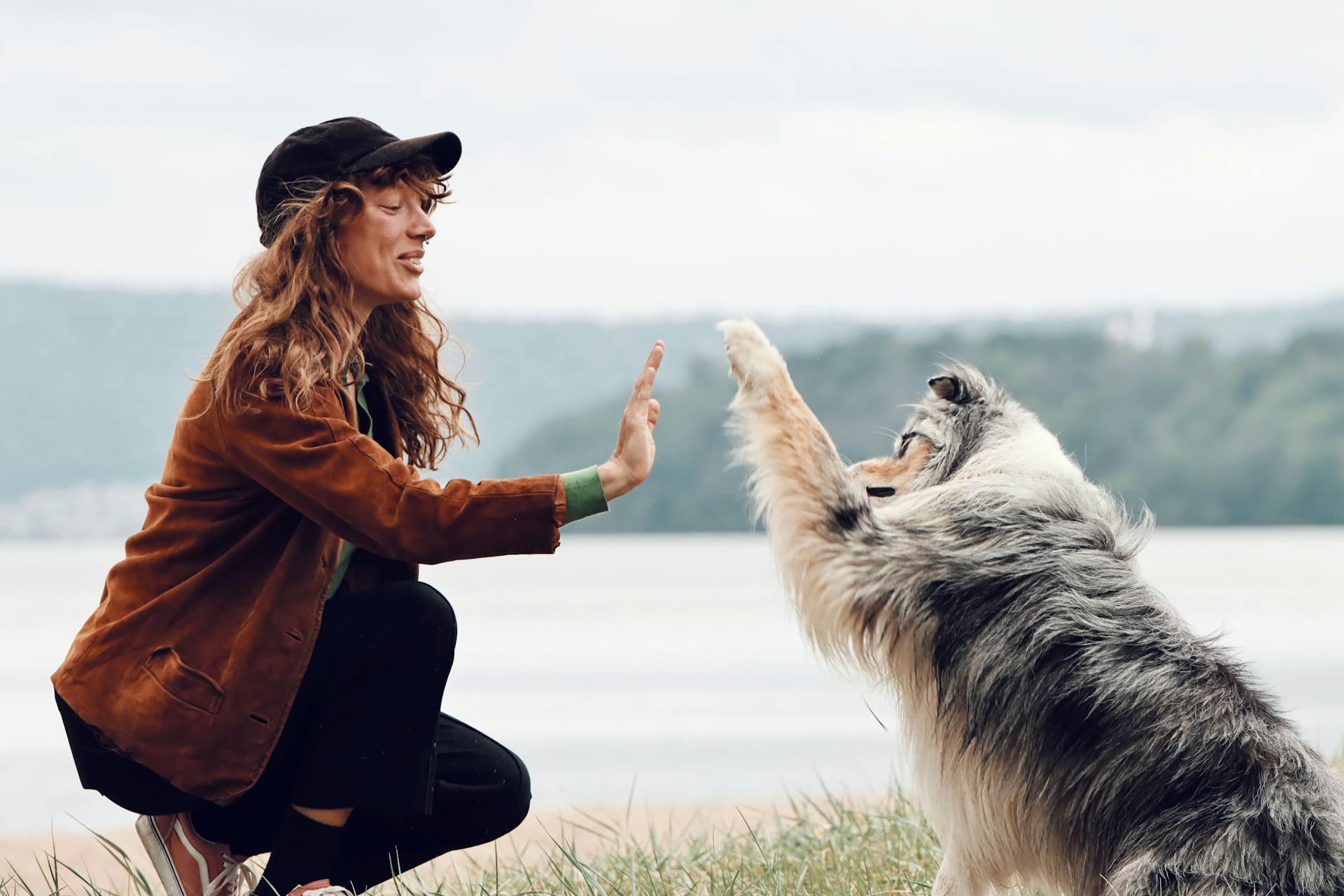
Dogs shed, and it's a fact of life for many pet owners.
Australian Shepherds, for example, have a medium to long coat with a dense undercoat that sheds heavily during spring and fall.
Daily brushing can help alleviate shedding, but it's a daily task that requires commitment.
Newly shed hair can still appear after just 20 minutes of brushing, making it a challenge for houseproud owners.
If you're considering owning a dog, it's essential to think about the extra work that comes with shedding.
Breed History and Facts
The Australian Shepherd Dog has a rich and complex history that's still a bit murky. They didn't actually originate from Australia, but rather from Spain's Basque region or lower Pyrenees.
Their name likely came from the fact that they were influenced by herding dogs from Australia, which were crossed with those from Spain and France. This makes their ancestry a true melting pot.
The breed was perfected in the US, where they were used to herd sheep in states like California, Wyoming, Colorado, and Idaho. They're now just as popular as companion dogs, agility, and obedience training dogs.
Related reading: Australian German Shepherds
Shepherd Dogs History
The Australian Shepherd's history is a fascinating tale of how a breed came to be. It's believed they originated from Spain's Basque region or lower Pyrenees, where they were used as herding dogs.
These dogs were later brought to the US by Spanish immigrants, who imported their sheep and herding dogs in search of a "New World." The breed's development doesn't end there, as some herding dogs from Australia were also crossed with those from Spain/France.
The Australian Shepherd's name is actually a bit of a misnomer, as they didn't originate from Australia. Instead, they're thought to have gotten their name from the fact that some herding dogs from Australia were crossed with those from Spain/France.
The breed's early development in the US was influenced by the English Shepherd, which was bred from Collie-type dogs. This is evident in the fact that around 20% of Australian Shepherds are born with a natural bobtail.
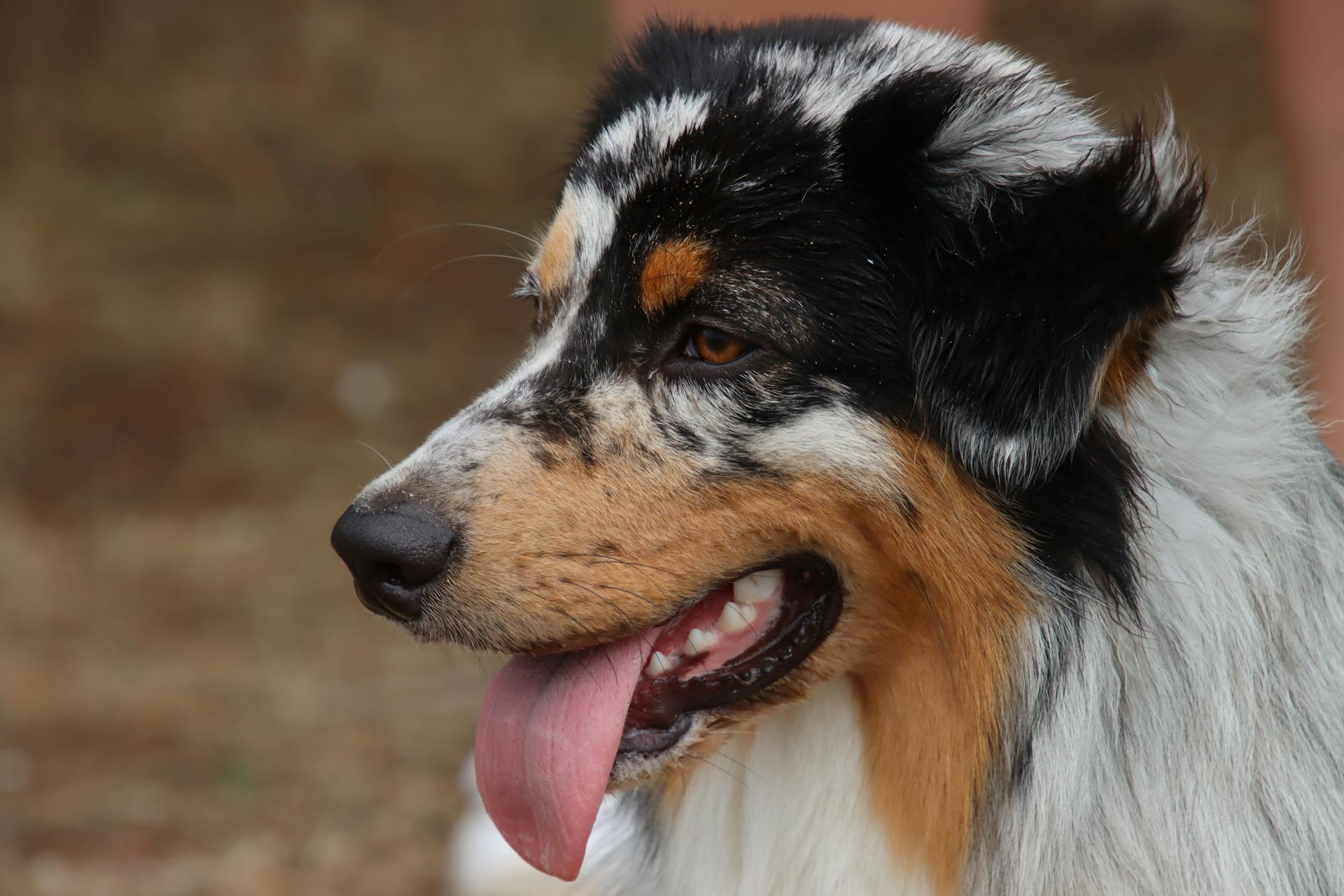
Today, Australian Shepherds are still used for herding, but they're also excelling in other areas, such as law enforcement, search and rescue, and as guide and service dogs. Their intelligence and athleticism make them a popular choice for agility sports.
Here's a brief overview of the breed's history:
The Australian Shepherd's versatility and intelligence have made them a beloved breed, and their popularity shows no signs of fading.
Fun Facts
Australian shepherds are synonymous with cowboy culture, often appearing in rodeos, Western films, and TV shows, which helped boost the breed's popularity.
In the 1970s, competitive Frisbee catching was a popular sport, and Australian shepherd Hyper Hank and his owner Eldon McIntire performed their trophy-winning frisbee routine during the Super Bowl XII pre-show.
It's very common for Aussies to have two different colored, or even marbled, eyes.
Here are some fun facts about Australian shepherds:
- Australian shepherds aren't actually from Australia. The breed originated in the mountains of Europe.
- Originally bred as hard-working herders, today's Aussies are often used as police dogs to sniff out narcotics or aid in search-and-rescue missions, and as service dogs that help individuals with a disability.
Living with an Australian Shepherd
Living with an Australian Shepherd requires a significant amount of time and attention. These dogs need at least two hours of exercise per day, which can be in the form of running, hiking, or agility training.
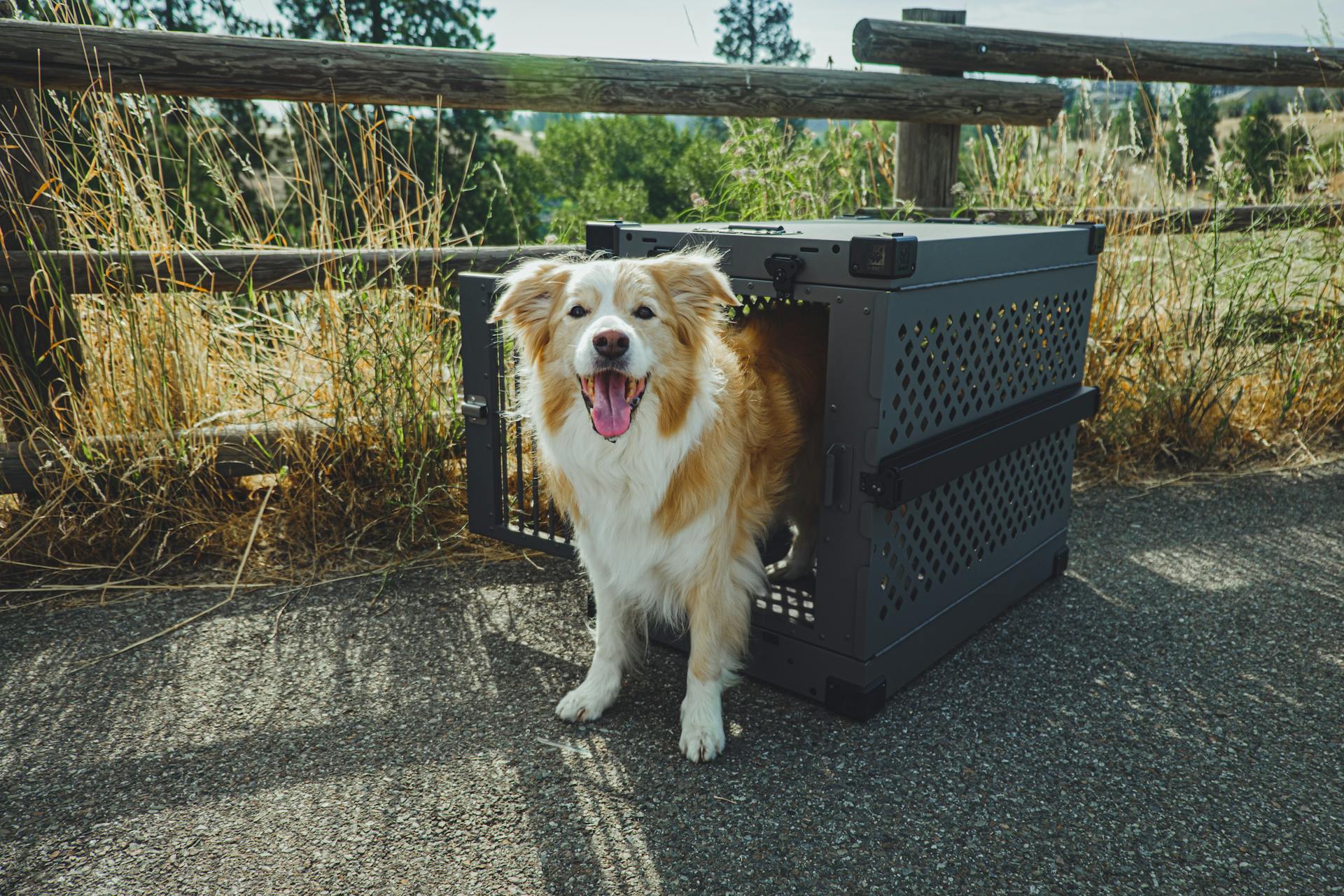
They're not suited for novice owners, as they require a controlled environment and a watchful owner. Australian Shepherds need a high fence to prevent them from escaping, and regular brushing to manage their dense double coats.
You'll need to invest in a good vacuum and lint rollers to deal with the dog hair, which sheds frequently. A regular exercise routine will help keep your Aussie happy and healthy.
Here are some key things to keep in mind when living with an Australian Shepherd:
- They need a minimum of 2 hours of exercise per day.
- They require a controlled environment and a watchful owner.
- They need regular brushing to manage their dense double coats.
- They shed frequently, so you'll need a good vacuum and lint rollers.
It's also essential to provide mental stimulation, such as nose work games and puzzle toys, to keep your Aussie's mind active. With the right care and attention, an Australian Shepherd can make a wonderful companion.
Health and Well-being
Australian Shepherds are highly energetic dogs that require regular exercise to stay happy and healthy. They need at least an hour of physical activity daily.
Their high energy levels also mean they can be prone to joint issues if they don't get enough exercise or if they're overweight. Regular exercise can help prevent this.
Australian Shepherds are highly intelligent dogs that thrive on mental stimulation, which makes them a great fit for active families or individuals who can provide them with plenty of attention and activities.
Anxious or Fearful Behavior
Australian Shepherds can be prone to anxious or fearful behavior, but the good news is that they can be trained and socialized to overcome these issues.
Exposing your Australian Shepherd to a variety of experiences during their first year of life is crucial in helping them build confidence and familiarity with different stimuli.
Gradually introducing new experiences and making sure each one is positive is key to helping your Australian Shepherd feel secure and confident.
Developing trust with your Australian Shepherd is essential, and this can be achieved by spending quality time with them, giving them physical and intellectual stimulation, and using positive reinforcement techniques during training sessions.
A stable and secure environment is vital for your Australian Shepherd's well-being, so it's essential to reduce stressful circumstances and provide a safe space for them to retreat to if needed.
It's not uncommon for Australian Shepherds to feel anxious or fearful in loud or crowded situations, so it's best to avoid these situations or provide a secure area for them to escape to.
With patience, compassion, and the right training, your Australian Shepherd can overcome their fears and anxieties and live a happy and healthy life.
Health Issues in the Breed
The Australian Shepherd breed is generally a healthy one, but like all breeds, they can be prone to certain health issues. The average life span of an Aussie is between 13 to 15 years.
Hip Dysplasia and Elbow Dysplasia are inherited skeletal conditions that can be exacerbated by quick growth and obesity, leading to painful arthritis. This can be a significant concern for owners, as it can result in costly medical expenses.
Cataracts are a prevalent eye disease in Aussie Shepherds, which can lead to clouding and blindness. Regular eye check-ups with a veterinarian are essential to detect this condition early on.
Epilepsy can be inherited, but it can also appear for other reasons, making it a complex condition to diagnose and treat. If you suspect your Aussie is experiencing seizures, it's crucial to seek veterinary attention immediately.
MDR1-related drug sensitivity is another concern for Aussie owners, as carriers of the gene can react allergically to certain drugs. A DNA test can quickly establish if your Aussie is a carrier, allowing you to take necessary precautions.
Expand your knowledge: What Is a Miniature Australian Shepherd
Frequently Asked Questions
Are Australian Shepherds cuddlers?
Australian Shepherds are known to be affectionate dogs that love to cuddle with their family members. They show their love and affection through physical closeness, making them a great companion for those who enjoy snuggles.
Sources
- https://aussiebase.com/why-is-my-australian-shepherd-so-clingy/
- https://www.dailypaws.com/dogs-puppies/dog-breeds/australian-shepherd
- https://dovecreekaussies.com/aussie-dog-for-you
- https://www.24petwatch.com/blog/australian-shepherd-guide
- https://www.hoomansfriend.com/post/australian-shepherd-temperament-beauty-brains-and-energy
Featured Images: pexels.com

